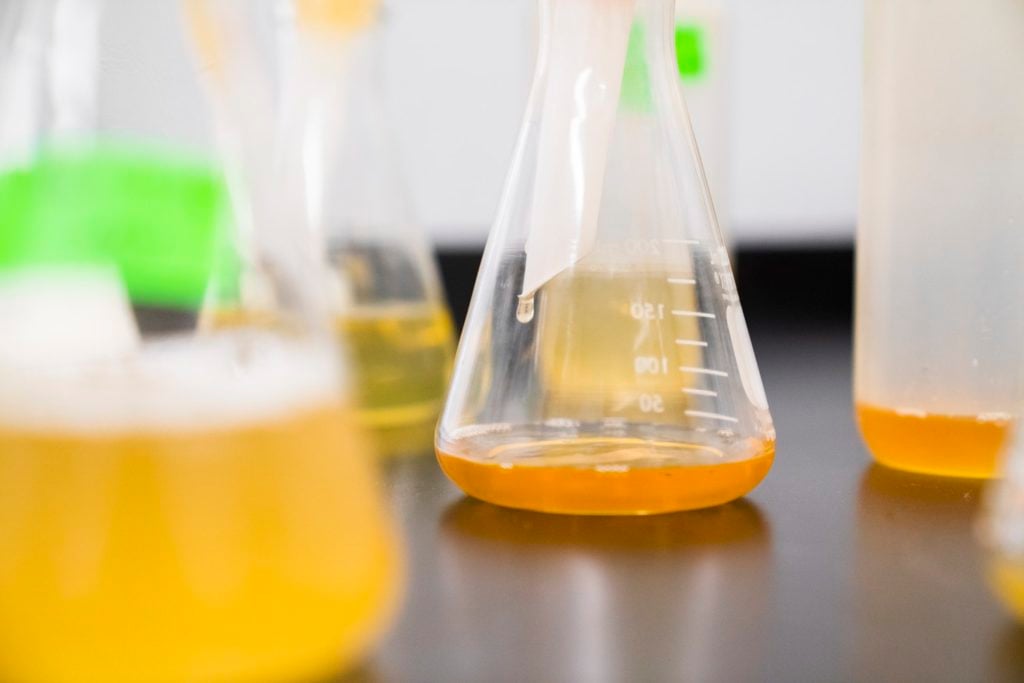STD Trichomoniasis Testing
What is Trichomoniasis?
Trichomoniasis, also known as “trich,” is a sexually transmitted disease caused by a single-celled protozoan parasite called Trichomonas vaginalis. An STD Trichomoniasis infection is considered one of the most common curable STDs in the U.S., with nearly 4 million people infected, many of whom are older women. You can order trichomoniasis urine testing through our sister site, HealthLabs.com.
Most people carrying the infection do not show symptoms, but symptoms can appear intermittently if the infection goes untreated, and they can be easily mistaken for the symptoms of a urinary tract infection (UTI).
Symptoms of Trichomoniasis:
The most common symptoms include itching, irritation, or soreness in the genitals and frequent or painful urination.
Symptoms of Trichomoniasis in Men:
Secure and Confidential
STD testing services
The fastest results possbile - available in 1 to 2 days
Secure and Confidential
STD testing services
The fastest results possbile - available in 1 to 2 days
- Pain after ejaculation
- Burning sensation after urination
- Men are less likely to experience symptoms than women
Symptoms of Trichomoniasis in Women:
- Vaginal discharge that is a clear, white, yellow, or greenish color with an unusual odor
- Genital redness or swelling
- Vaginal bleeding occurring between periods
Condoms do protect against the Trichomonas vaginalis parasite, which is especially important because as with most STDs, having an active infection makes it easier to transmit or contract HIV or other STDs. As such, trichomoniasis often co-exists with other sexually transmitted infections.
Trichomonas vaginalis is transmitted from one person to another during unprotected sexual intercourse; passing from the penis to vagina or vice versa, although it can also spread from vagina to vagina. Fluids- semen, vaginal lubrication, discharge, or menstrual blood- passing from one partner to the other during vaginal or anal intercourse, as well as mutual masturbation or sharing sex toys, can allow the parasite to travel from one partner to the other. Typically, the parasite infects the vagina and urinary tract during sexual activity, affecting the urethra, cervix, and vulva of women and the urethra or under the foreskin of uncircumcised men. It is uncommon for other body parts to be affected by the parasite, including the mouth and anus. In rare cases, the parasite can also be spread from mother to baby during childbirth if the mother has an active infection during delivery.
When to Get Tested & are there False Negatives?
The incubation period for a trich infection is typically between 5 to 28 days, during which time the infection develops and begins to show symptoms, if any. This window period can vary from person to person. The parasite is easily spread during this time and can return false negative test results. Testing for trich can be conducted without concern for false negatives any time after the incubation period. Even if the infection is years old, a test will confirm the presence of the parasite so that treatment can begin. To reduce chances of false negatives, wait 28 days after potential exposure to be tested for trichomoniasis and always practice safe sex and regular STD testing (at least once a year). Like we mentioned earlier, trichomoniasis can be easily cured and does not always show symptoms so get tested if you think you might have been exposed.
How to test for Trichomoniasis:
 Without treatment, a trich infection can last for months or years, and it is impossible to diagnose a STD Trichomonas infection based on symptoms alone.
Without treatment, a trich infection can last for months or years, and it is impossible to diagnose a STD Trichomonas infection based on symptoms alone.
Diagnosing a trichomoniasis infection usually requires a sample of discharge, requiring a pelvic exam for women and a urethral swab or urine sample for men. However, the least invasive way to test for trichomoniasis in men or women is simply via a urine sample. The most common testing method for women is a “wet mount” or “wet preparation,” which allows for evaluation of the discharge under a microscope to confirm the presence of the parasite. A Trichomonas vaginalis culture can also be used to confirm the infection after it is discovered during a woman’s Pap smear if the presence of the parasite can’t be confirmed using microscopy.
The least invasive way to test for trichomoniasis is via a first catch or first void urine sample– meaning that the urine sample is the first 20-30 milliliters of urine in the initial stream of urine. Individuals should not have urinated for at least one hour prior to specimen collection.
Rapid antigen and nucleic acid probe blood tests can be used for on-the-spot tests with results available in minutes, but do not offer the accuracy of a test conducted using a discharge sample.
Most STD screenings do not include trichomoniasis, so in most cases, patients must request a trichomoniasis test.
Trichomoniasis is easily treated with a single dose of the antibiotics metronidazole or tinidazole. Vaginally applied medications may relieve the symptoms of trich, such as itching or swelling, but will not kill the parasite that causes the infection. In cases where metronidazole doesn’t cure a trich infection, it is almost always because a sexual partner has not been cured and has caused reinfection. In fact, 1 in 5 people become reinfected with STD trichomoniasis within three months of treatment.
Pregnant women are approved to take antibiotics to treat and cure a trich infection, but it doesn’t reduce their risk of preterm labor.
Key Takeaways:
- Trichomoniasis infection is caused by a parasitic protozoan (Trichomonas vaginalis).

- Approximately 3.7 million Americans have trichomoniasis.
- Only about 30 percent of all trichomoniasis cases have symptoms.
- Women are more likely than men to display trichomoniasis symptoms.
- If symptoms are present, they usually mirror a urinary tract infection (UTI).
- Men rarely show symptoms and often learn they are infected once their partner has symptoms and gets tested.
- An untreated trich infection can last for months or years.
- The infection is easily cured with a single dose of antibiotics.
- Condoms prevent the spread of the infection.
- Trich increases the likelihood of transmitting or contracting HIV and other STDs.
- 1 in 5 people become reinfected within three months after being cured.
Get tested for STD trichomoniasis here.
Read the next section: Will an STD Affect My Pregnancy or Breastfeeding?
Medically Reviewed by Erin Zinkhan, MD, BSBE on February 4, 2023
Secure and Confidential
STD testing services
The fastest results possbile - available in 1 to 2 days

Tagged
Categorized As
Author: Kristena Ducre
Kristena is a sex-positive LGBTQ ally and general fan of sexy things. As a writer, she is passionate about empowering people's sex lives with accurate and straightforward information. Sex can be a ton of fun, but sexual health is not a laughing matter. In the bedroom, as in life, knowledge is power.




